Gone are the days when kitchen appliances were mere tools for daily cooking routines. Today, they’ve evolved into not just functional items but also symbols of style and innovation. The rise of Belgian waffle machines, in particular, has sparked a wave of enthusiasm in the culinary world, especially in the European and American markets. This surge is not just a passing trend but a reflection of changing consumer preferences and the industry’s relentless pursuit of excellence. Let’s delve into the intricate details of these waffle wonders, exploring their features, market dynamics, consumer benefits, technological advancements, and the broader impact on the appliance industry.
Introduction to Belgian Waffle Machines
Belgian waffle machines have become a staple in the kitchen appliance market, captivating the hearts and taste buds of waffle enthusiasts worldwide. These specialized devices are designed to craft the iconic Belgian waffle, known for its fluffy, golden-brown exterior and its dense, yet airy interior. Unlike your standard waffle, the Belgian waffle boasts a unique shape with deep pockets that are perfect for holding butter, syrup, and fresh fruit.
Originating from Belgium, the Belgian waffle has a rich history that dates back to the 13th century. It was originally a simple, flat batter-based waffle that was a common food among the Belgian working class. Over time, the recipe and technique evolved, leading to the creation of the now-famous Belgian waffle, which made its way to America in the 1940s and 50s, particularly in the context of the waffle craze sparked by World War II.
The rise of Belgian waffle machines in the kitchen appliance market can be attributed to a few key factors. First and foremost, the machines themselves have become more user-friendly and accessible. Early models required a considerable amount of skill and patience to operate, but modern Belgian waffle machines are now equipped with non-stick surfaces, digital controls, and removable plates for easy cleaning, making them more appealing to the average consumer.
Another significant factor is the increasing popularity of Belgian waffles in the foodservice industry. These waffles are not just a breakfast treat; they have expanded into the realm of brunch, dessert, and even savory dishes, such as waffle sandwiches and waffle pizzas. This versatility has led to a growing demand for high-quality Belgian waffle machines in commercial kitchens.
The design of a professional Belgian waffle machine is a marvel of engineering, balancing simplicity with functionality. These machines typically feature a heating element that evenly distributes heat across the waffle iron, ensuring that the batter cooks to the perfect consistency. Many models come with adjustable temperature controls, allowing users to fine-tune the cooking process to their preference. The non-stick surfaces are crucial for easy release and removal of the waffles, while the removable plates simplify the cleaning process.
Belgian waffle machines come in various sizes and configurations. Some are countertop models, ideal for home use, while others are built for commercial use, capable of producing waffles at a high volume. Commercial machines often have features like a timer and a batch indicator, making them perfect for busy cafes, restaurants, and bakeries.
The process of making a Belgian waffle is straightforward. Users simply fill the machine with batter, close the lid, and wait until the indicator light signals that the waffle is ready. The result is a waffle that is perfectly crispy on the outside and tender on the inside, with a texture that is both satisfying and visually appealing.
In addition to the traditional round Belgian waffle, some machines offer a variety of shapes and sizes, including heart, square, and even rectangular waffles. This variety caters to the diverse tastes of consumers and allows for creative customization of waffle toppings and recipes.
The market for professional Belgian waffle machines is also driven by the growing trend of home baking and cooking. As more people seek to replicate the flavors of their favorite restaurants at home, they turn to high-quality appliances like the Belgian waffle machine. This trend has also been bolstered by the rise of food blogs, social media, and cooking shows that celebrate the art of home baking.
In conclusion, the Belgian waffle machine has become an essential tool for anyone looking to enjoy the quintessential Belgian waffle in the comfort of their own home. Its versatility, ease of use, and the ability to produce a classic waffle with minimal effort have made it a favorite among both casual bakers and professional chefs. As the demand for high-quality, customizable waffles continues to grow, it’s clear that the professional Belgian waffle machine is here to stay.
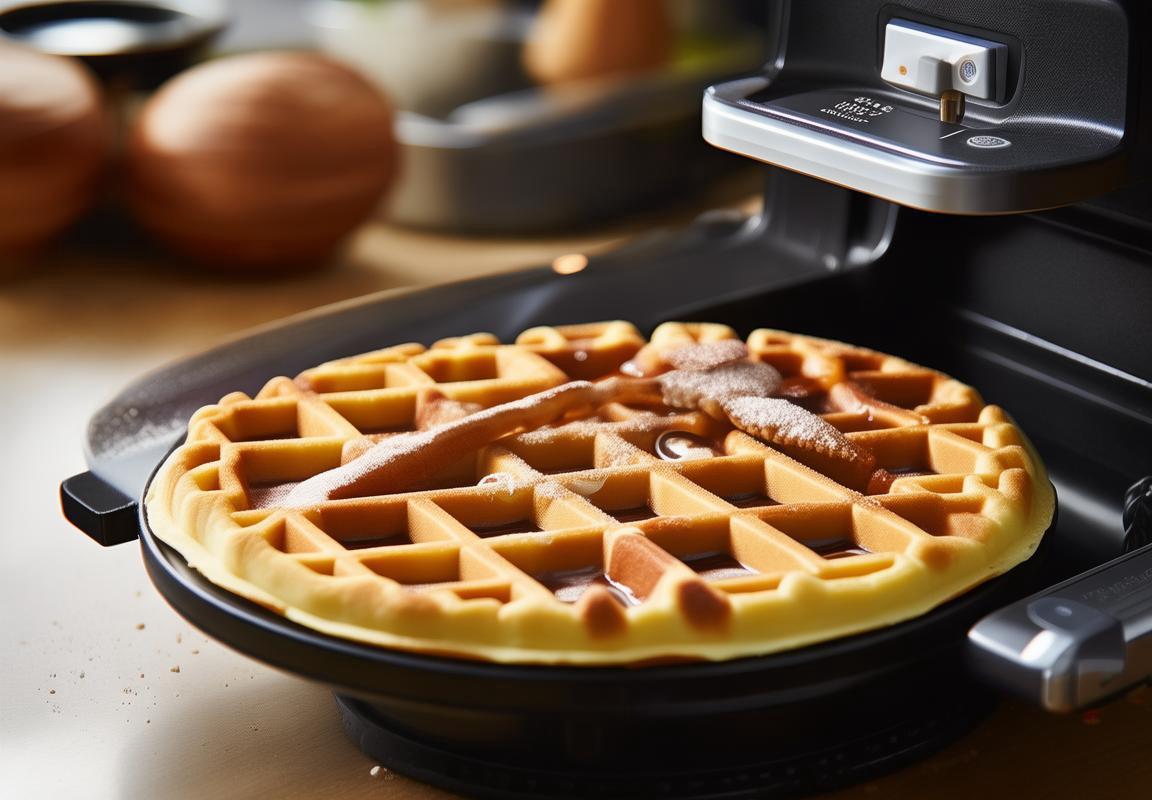
The Rise of Belgian Waffles in the Western Market
Belgian waffles, with their signature crispy exterior and tender interior, have quietly surged in popularity in the Western market, captivating both casual home cooks and culinary enthusiasts alike. This delectable treat, once a staple of breakfast tables in Belgium, has transcended borders and become a sought-after favorite across the United States and Europe.
The phenomenon of Belgian waffles’ rise in the Western market can be attributed to several factors. For starters, the culinary culture in the West has become increasingly diverse, with a growing appreciation for international flavors. Belgians, known for their love of baking and pastries, have brought their expertise to the table, offering a unique twist on the traditional waffle.
Gourmet food markets and specialty shops have played a pivotal role in the spread of Belgian waffles. These outlets often carry an array of imported goods, including high-quality Belgian waffle irons and the necessary ingredients to create authentic Belgian waffles at home. The convenience of these shops has allowed enthusiasts to easily replicate the taste of a Belgian café right in their own kitchens.
Social media has also been a significant driver in the popularity of Belgian waffles. Influencers and bloggers have shared their waffle-making adventures, showcasing the artistry and flavor profiles of these delightful treats. The hashtag #BelgianWaffles has become a trend, with countless photos and recipes circulating online, further fueling the desire for this breakfast favorite.
Restaurants and cafes have embraced the Belgian waffle trend, often offering a variety of flavors and toppings that cater to different tastes. From classic vanilla to rich chocolate, the options are endless, allowing for endless creativity in the realm of breakfast and dessert menus. This variety has broadened the appeal of Belgian waffles, making them a staple on brunch menus and a sweet ending to a meal.
Another factor contributing to the rise of Belgian waffles is their versatility. Unlike their American counterparts, Belgian waffles have a fluffier texture and are less sweet, which makes them an excellent canvas for a wide range of toppings. From fresh berries and whipped cream to savory bacon and eggs, the possibilities are almost limitless, appealing to those who seek both sweet and savory combinations.
The health-conscious consumer has also played a role in the popularity of Belgian waffles. While traditional Belgian waffles are indulgent, the Western market has seen a surge in healthier versions, such as gluten-free and low-carb options. This has allowed more people to enjoy the joy of waffle-making without the guilt.
The quality of Belgian waffles is another key factor. The process of making a Belgian waffle is meticulous, requiring the right balance of ingredients and attention to detail. This dedication to quality has set Belgian waffles apart from other waffle styles, solidifying their status as a premium product.
Moreover, the nostalgic appeal of Belgian waffles cannot be overlooked. For many, the scent of a freshly baked waffle brings back memories of family gatherings and festive occasions. This sense of nostalgia has played a role in the emotional connection consumers have with Belgian waffles, making them a cherished treat for special moments.
In conclusion, the rise of Belgian waffles in the Western market is a testament to the power of culinary diversity, the influence of social media, and the ever-evolving food landscape. As the trend continues to grow, it’s clear that the love for this delightful treat is here to stay.
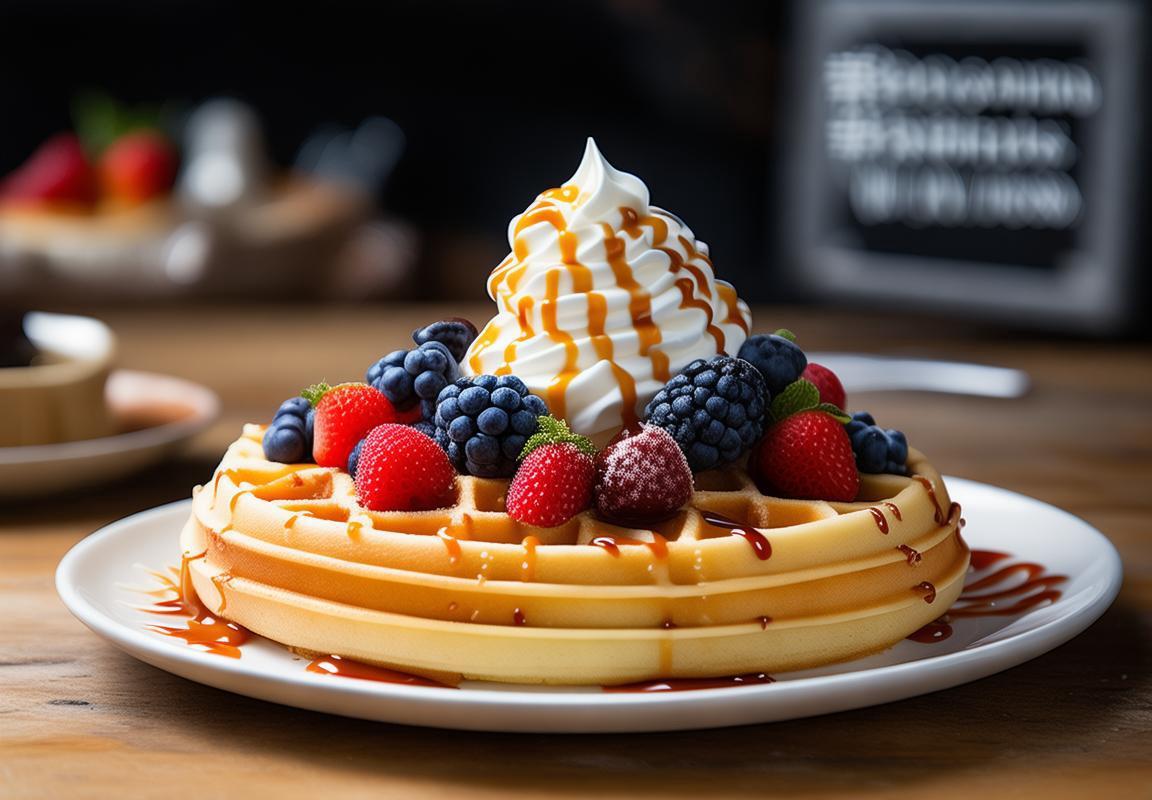
Understanding the European and American Consumer Preferences
The European and American markets, with their diverse culinary landscapes, have unique preferences when it comes to kitchen appliances, and Belgian waffle machines are no exception. Understanding these preferences is crucial for manufacturers looking to tap into these lucrative markets.
In Europe, particularly in countries like Belgium, the Netherlands, and France, the love for Belgian waffles runs deep. These cultures have a rich tradition of enjoying these fluffy, golden treats, often with a variety of toppings. The preference here is often for machines that can deliver a classic Belgian waffle with a fine, crisp exterior and a soft, chewy interior. Consumers value the ability to control the browning and the texture of the waffle, which is why adjustable temperature settings and non-stick surfaces are highly sought after.
On the other side of the Atlantic, American consumers have a different set of priorities. They tend to appreciate a broader range of features that cater to a more varied diet and lifestyle. For instance, the American market is increasingly interested in waffle makers that offer multiple browning levels to accommodate different dietary preferences, from light and delicate to deep and rich. The inclusion of non-stick surfaces is also a must, but American consumers also look for convenience features such as removable plates for easy cleaning and preset cooking times for added simplicity.
In Europe, the aesthetic appeal of the waffle maker is also a significant factor. Many consumers in this region prefer appliances that complement their kitchen decor, leading to a trend towards sleek designs and high-quality materials. The European market is also more open to eco-friendly features, such as energy-saving modes and recyclable components, reflecting a growing environmental consciousness.
American consumers, while also valuing aesthetics, are more focused on functionality. The desire for versatility is evident in the popularity of waffle makers that can double as griddles or panini presses. The convenience of being able to cook multiple items at once is highly regarded, especially among busy households. Additionally, the American market is more accepting of digital interfaces, which they find easier to use and more precise than mechanical controls.
Health and wellness are other key considerations in both markets. In Europe, there’s a growing interest in waffle makers that offer healthier options, such as those made with sustainable materials or those that allow for the preparation of low-fat or gluten-free waffles. American consumers, on the other hand, are more likely to seek out waffle makers that can cook healthier toppings, like fresh fruits or Greek yogurt, rather than the waffles themselves.
Another difference lies in the importance of brand reputation. In Europe, brand loyalty is strong, and consumers are willing to pay a premium for well-known, high-quality brands. American consumers, while also brand-conscious, are more open to trying new brands and are influenced by online reviews and recommendations from friends and family.
The preference for customization is another area where European and American consumers differ. In Europe, the emphasis is often on the machine itself, with consumers looking for the perfect tool to create the ideal waffle. American consumers, however, are more interested in how the waffle machine fits into their overall lifestyle and diet, leading to a greater interest in accessories and attachments that can expand the machine’s capabilities.
Lastly, the frequency of use plays a role in consumer preferences. In Europe, the tradition of enjoying waffles is often tied to special occasions or seasonal events, leading to a demand for machines that can produce high-quality waffles in batches. In America, the convenience of a quick and easy breakfast or a weekend treat means that waffle makers are more likely to be used daily, and thus, durability and ease of maintenance are crucial factors.
In conclusion, while both the European and American markets have a shared appreciation for the Belgian waffle, the specific preferences of consumers in each region highlight the importance of tailoring products to meet the unique needs and values of each demographic. By understanding these nuances, manufacturers can develop waffle machines that not only appeal to the taste buds but also cater to the diverse lifestyles of consumers across the globe.
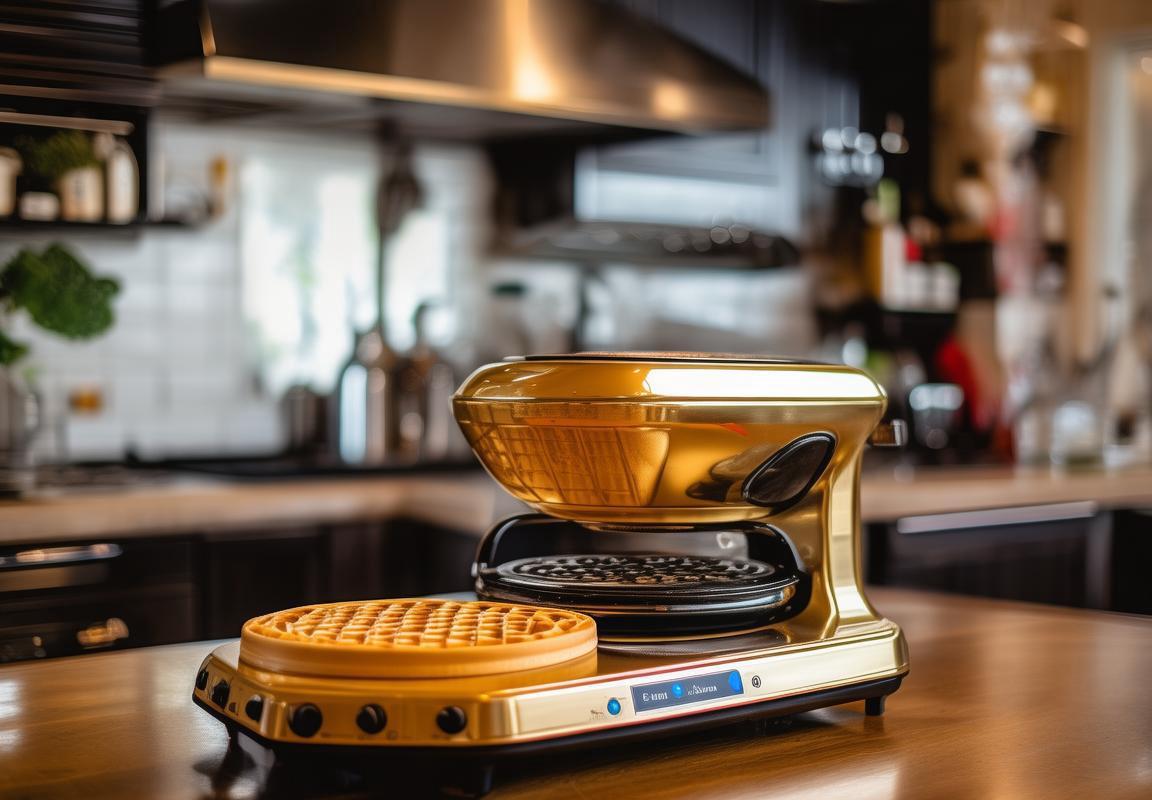
Key Features of Professional Belgian Waffle Machines
Professional Belgian waffle machines have gained significant popularity in the culinary world, and their design reflects a blend of functionality, durability, and innovation. Here’s a closer look at some of the key features that set these machines apart:
The non-stick surfaces are a game-changer for both home chefs and professional bakers. These surfaces ensure that waffles release effortlessly, reducing the need for excessive oil or butter, and making cleanup a breeze. The high-quality materials used in these coatings are designed to withstand the rigors of frequent use and maintain their non-stick properties over time.
The heating elements are meticulously designed to distribute heat evenly across the waffle iron’s surface. This even heat distribution is crucial for achieving those perfect, golden-brown waffles with a crispy exterior and a tender interior. Many professional models come with adjustable temperature controls, allowing users to tailor the cooking temperature to their specific preferences.
The size and shape of the Belgian waffle irons are distinctive and functional. The large surface area allows for the creation of waffles that are thicker and more substantial than their American counterparts. The deep wells of these irons hold more batter, resulting in a waffle with a rich, fluffy texture. The classic heart shape or round design is not just for aesthetics; it also contributes to the uniformity of the waffle’s structure.
The build quality of professional Belgian waffle machines is exceptional. These appliances are often constructed with heavy-duty materials like stainless steel, which not only adds to their longevity but also gives them a sturdy feel. The handles are often ergonomically designed for a comfortable grip, and the overall construction ensures that the machine can withstand the demands of commercial use.
One of the standout features of many professional Belgian waffle machines is the ability to cook multiple waffles at once. This is particularly beneficial in busy kitchens or for those hosting gatherings. Some models can cook up to four waffles simultaneously, significantly reducing the time it takes to serve a large group.
The presence of a locking mechanism is a practical feature that prevents the iron from accidentally closing while in use. This is especially important when cooking with a large amount of batter or when the iron is placed on a countertop with other items nearby. The locking feature adds an extra layer of safety and convenience.
Many professional Belgian waffle machines come with a removable drip tray. This feature is essential for catching any excess batter or grease that might spill during the cooking process. The trays are typically made of non-reactive materials and are easy to clean, contributing to the overall hygiene of the appliance.
The inclusion of an indicator light is a simple yet effective feature. It lets the user know when the iron is preheated and ready to cook, ensuring that waffles are cooked to perfection every time. Some models even have a timer that beeps when the waffle is done, adding an extra level of precision.
The ability to flip the waffle during cooking is a feature found in some professional models. This mechanism ensures that both sides of the waffle are cooked evenly, which is particularly important for achieving a consistent texture and color.
Lastly, the design of the hinge and the overall portability of the machine should not be overlooked. A well-designed hinge allows the iron to open and close smoothly, making it easier to fill and remove the waffles. Additionally, some models are lightweight and come with a carrying handle, making them convenient for moving from one location to another.
In summary, the key features of professional Belgian waffle machines are designed to enhance the cooking experience, from the non-stick surfaces and even heat distribution to the durable construction and practical accessories. These features make these machines not just a staple in professional kitchens but also a favorite among waffle enthusiasts at home.
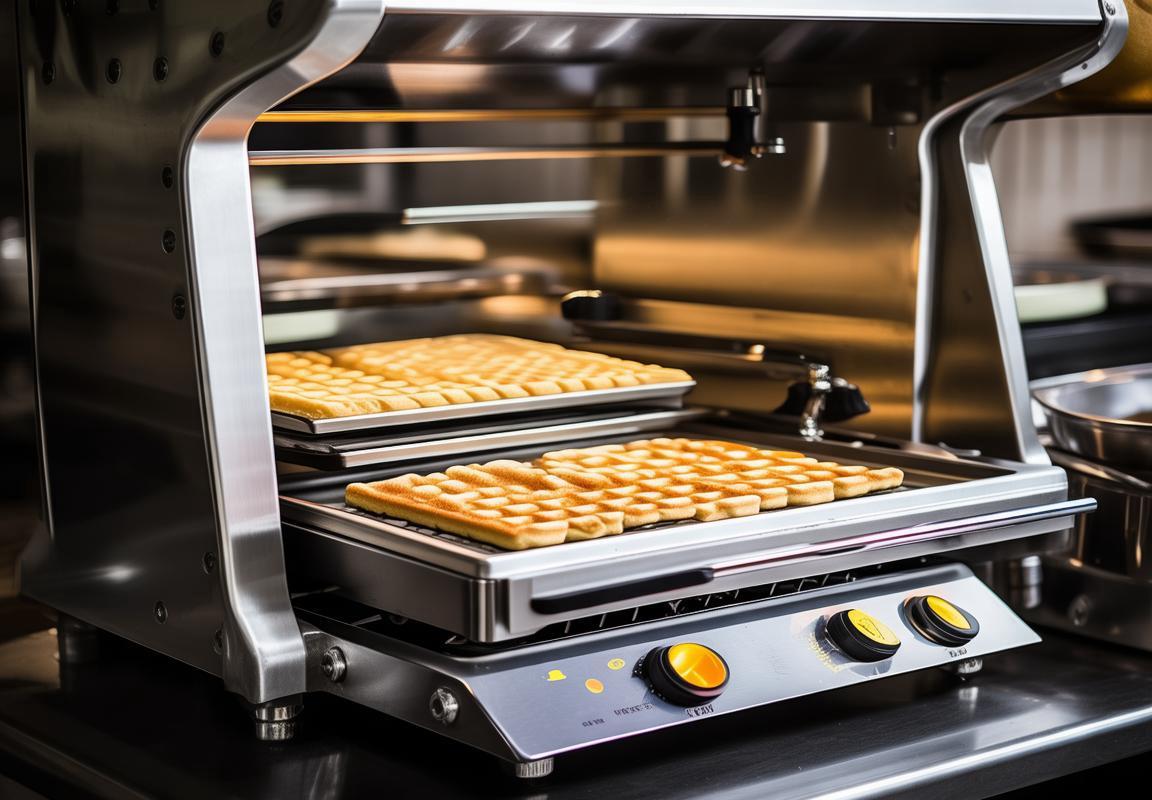
Market Dynamics: Growth and Trends
The evolution of the kitchen appliance industry has been marked by the rise of various products, with Belgian waffle makers emerging as a significant trend. The market dynamics surrounding these appliances are shaped by a variety of factors, including consumer demand, technological advancements, and cultural shifts. Let’s delve into the growth and trends that have propelled the professional Belgian waffle machine market forward.
In recent years, there has been a noticeable surge in the popularity of Belgian waffles, often attributed to their rich texture and versatility. This surge has not only influenced the consumer market but has also had a profound impact on the commercial sector, where professional Belgian waffle machines have found their place in cafes, restaurants, and even in some homes.
The growth of the professional Belgian waffle machine market is closely tied to the increasing demand for specialty breakfast items. As consumers seek unique and indulgent breakfast options, the demand for Belgian waffles has skyrocketed. This demand has, in turn, fueled the need for high-quality, commercial-grade appliances that can consistently produce the perfect waffle.
One of the key trends in the market is the emphasis on innovation. Manufacturers are continuously pushing the boundaries of what a waffle machine can do, introducing features like non-stick surfaces, programmable settings for customization, and even Bluetooth connectivity for remote operation. These innovations cater to both the consumer and the professional chef, offering convenience and precision.
The professional Belgian waffle machine market is also witnessing a shift towards healthier options. Consumers are becoming more health-conscious, and this trend is reflected in the types of waffles available. While traditional Belgian waffles are often associated with rich, buttery flavors, there’s a growing demand for healthier versions made with whole grains, fruit purees, and low-fat ingredients. This has prompted manufacturers to develop machines that can handle these alternative ingredients without compromising on quality.
Another significant trend is the integration of technology. Smart appliances are becoming increasingly common, and professional Belgian waffle machines are no exception. These machines often come with digital displays, allowing users to monitor and adjust cooking times, temperatures, and settings with ease. This not only enhances the user experience but also ensures that the waffles are cooked to perfection every time.
The market for professional Belgian waffle machines is also being influenced by the rise of social media and influencer culture. Chefs and food enthusiasts often share their waffle-making techniques and recipes online, which can drive sales and inspire new designs. As a result, manufacturers are paying close attention to the latest trends in the culinary world to ensure their products remain relevant.
Moreover, the global distribution of these appliances is expanding. Once primarily popular in Belgium and the United States, professional Belgian waffle machines are now sought after in various international markets. This expansion is facilitated by the increasing number of international travelers who have sampled the delicacy and wish to recreate the experience at home or in their businesses.
The environmental consciousness is another factor that’s shaping the market dynamics. As consumers and businesses alike become more environmentally aware, there’s a growing preference for energy-efficient appliances. Manufacturers are responding by producing machines that consume less power while still delivering exceptional performance.
Lastly, the market for professional Belgian waffle machines is characterized by a high level of competition. This competition drives innovation and keeps prices competitive, benefiting both the consumer and the professional user. As new entrants join the market, established brands are forced to continually improve their offerings to maintain their market share.
In conclusion, the market for professional Belgian waffle machines is dynamic and growing, driven by consumer preferences, technological advancements, and cultural shifts. The trends suggest that the market will continue to evolve, with a focus on health, technology, and sustainability. As the demand for unique and high-quality breakfast items persists, the professional Belgian waffle machine market is poised to remain a key player in the kitchen appliance industry.
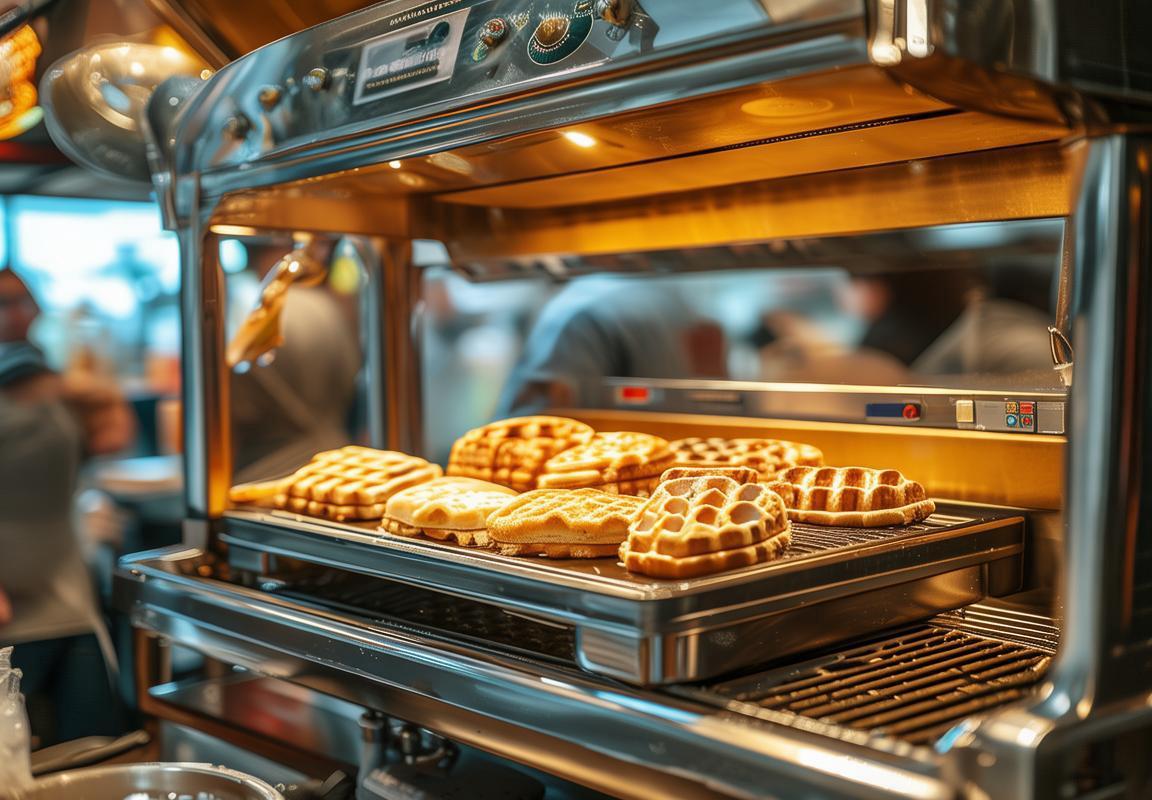
Consumer Benefits and Trends in Kitchen Appliances
In recent years, the kitchen appliance market has seen a surge in consumer interest, driven by a combination of technological advancements, changing lifestyles, and a growing emphasis on convenience and health. Here’s a closer look at the benefits and trends that are shaping the landscape of kitchen appliances.
Consumers are increasingly seeking appliances that not only simplify their cooking tasks but also offer a touch of elegance and sophistication to their kitchens. Smart appliances, for instance, have become a hot commodity, providing connectivity and control through smartphones and voice assistants. This integration allows users to monitor and manage their appliances remotely, ensuring that meals are ready at the perfect time, no matter where they are.
Energy efficiency has also become a major concern. As environmental consciousness grows, consumers are gravitating towards appliances that consume less energy, not only to reduce their carbon footprint but also to save on utility bills. Energy-saving labels and certifications are now standard features on many appliances, making it easier for consumers to make informed choices.
The demand for multifunctional appliances has soared as well. Many consumers are looking for devices that can perform multiple tasks, such as ovens that can bake, roast, and even air-fry, or countertop mixers that can knead dough, whip cream, and blend smoothies. This versatility not only saves space but also streamlines the cooking process, allowing for more efficient meal preparation.
Health and wellness are at the forefront of kitchen appliance innovation. There’s a growing trend towards appliances that can help consumers make healthier choices. For example, air fryers have gained popularity for their ability to cook food with less oil, while high-speed blenders are being used to create nutrient-rich smoothies and soups. These appliances not only promote healthier eating habits but also make it easier to incorporate fresh ingredients into daily meals.
Customization is another key trend. Consumers are no longer satisfied with one-size-fits-all appliances. They want products that can be tailored to their specific needs and preferences. This is evident in the rise of adjustable settings on coffee makers, the availability of different blade options in food processors, and the ability to program specific cooking times and temperatures on ovens and slow cookers.
Sustainability is a driving force in the kitchen appliance market. With the increasing awareness of environmental issues, consumers are looking for appliances that are made from recycled materials, have a longer lifespan, and can be easily repaired or recycled at the end of their life. Brands that prioritize sustainability are gaining a competitive edge by offering eco-friendly alternatives.
The kitchen has become a hub for entertainment as well. Appliances that can connect to streaming services, offer interactive cooking guides, or provide educational content are becoming more popular. These smart appliances not only enhance the cooking experience but also serve as a source of entertainment and education for the entire family.
In terms of design, there’s a shift towards sleek, modern aesthetics. Consumers are drawn to appliances that blend seamlessly with their kitchen decor, whether it’s through color options, stainless steel finishes, or minimalist designs. The kitchen is no longer just a place for cooking; it’s a space for socializing and enjoying life, and appliances that reflect this are in high demand.
Lastly, the rise of online shopping has had a significant impact on the kitchen appliance market. Consumers are now more likely to research and purchase appliances online, thanks to the convenience and access to a wider range of products. This has led to a competitive landscape where brands must focus on providing exceptional customer service and detailed product information to stand out.
The benefits and trends in kitchen appliances reflect a broader shift in consumer values and priorities. As technology continues to evolve, we can expect to see even more innovative and user-friendly appliances that cater to the diverse needs and desires of today’s consumers.
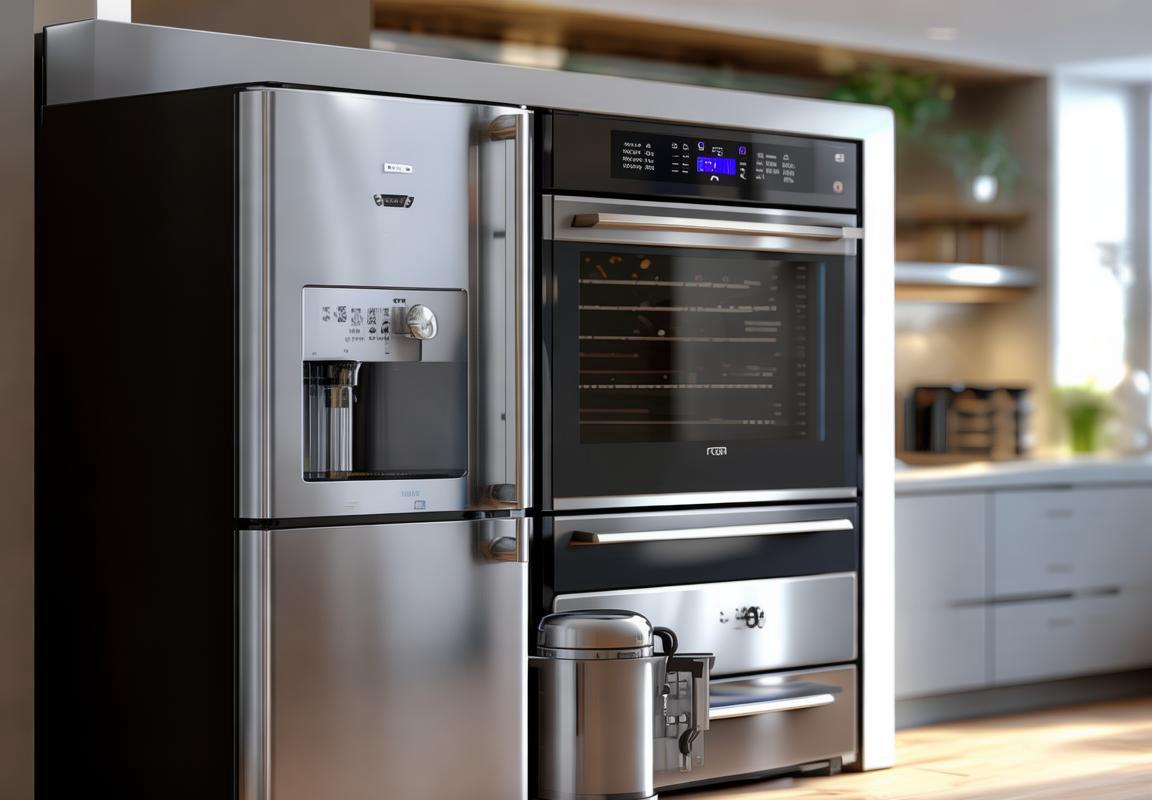
Innovation in Belgian Waffle Technology
The evolution of Belgian waffle technology has been a fascinating journey, marked by continuous innovation that enhances both the culinary experience and the ease of use. Here’s a glimpse into the advancements that have shaped the modern professional Belgian waffle machine:
Waffle Iron Design EvolutionEarly Belgian waffle irons were bulky and heavy, often requiring significant effort to heat up and cook the waffles. Over time, designers have focused on reducing the size and weight without compromising on the quality of the waffles. Today’s machines are sleeker, lighter, and more portable, making them a staple in commercial kitchens and home bakeries alike.
Non-Stick CoatingsOne of the most significant innovations in Belgian waffle technology is the development of non-stick coatings. These coatings ensure that the waffles release effortlessly from the iron, eliminating the need for excessive butter or oil. This not only simplifies the cleaning process but also contributes to the longevity of the waffle iron.
Thermal Control SystemsModern professional Belgian waffle machines come equipped with precise temperature control systems. These systems allow users to adjust the heat to the perfect level for their preferred waffle consistency. Whether you like your waffles soft and chewy or crispy and golden, these systems guarantee consistent results every time.
Digital Displays and User-Friendly InterfacesThe integration of digital displays and user-friendly interfaces has made waffle machines more accessible to a wider range of users. These features provide clear temperature settings and cooking times, making it easier for both novices and seasoned bakers to achieve the perfect waffle.
Variable Baking PlatesInnovative waffle irons now offer variable baking plates, allowing for customization of the waffle pattern and size. Some models can even create mini waffles or Belgian-style waffles with intricate designs, appealing to those who enjoy variety in their breakfast or dessert options.
Fast Heat-Up TimesOne of the key advantages of modern Belgian waffle machines is their fast heat-up times. These machines can reach the optimal temperature in a matter of minutes, ensuring that you can start making waffles almost immediately after plugging them in.
Advanced Heat DistributionThe even distribution of heat across the waffle iron’s surface is crucial for a perfect waffle. Newer models feature advanced heat distribution technology that ensures every part of the waffle receives the right amount of heat, resulting in a uniformly cooked waffle with no cold spots.
Safety FeaturesSafety has been a major focus in the development of Belgian waffle technology. Modern machines include features like automatic shut-off, which turns off the power after a certain period of inactivity, reducing the risk of accidents. Additionally, some models come with cool-touch handles and non-slip bases to prevent accidents and make the waffle-making process safer.
Customizable PatternsInnovation has also led to the ability to customize the waffle pattern. Some professional Belgian waffle machines allow users to change the pattern by swapping out the baking plates, offering a creative edge for those looking to stand out with their waffle designs.
Energy EfficiencyEnergy efficiency is a growing concern for consumers and businesses alike. Newer models are designed to use less energy, which not only saves money on utility bills but also contributes to a smaller carbon footprint.
Integration with Smart Kitchen TechnologyThe integration of smart kitchen technology into Belgian waffle machines is another exciting development. Some models can be controlled remotely via smartphone apps, allowing users to start cooking their waffles even before they arrive home from work.
In conclusion, the innovation in Belgian waffle technology has transformed a simple kitchen appliance into a versatile and efficient tool for creating delicious waffles. From design improvements to enhanced functionality, these advancements continue to enhance the waffle-making experience for consumers worldwide.
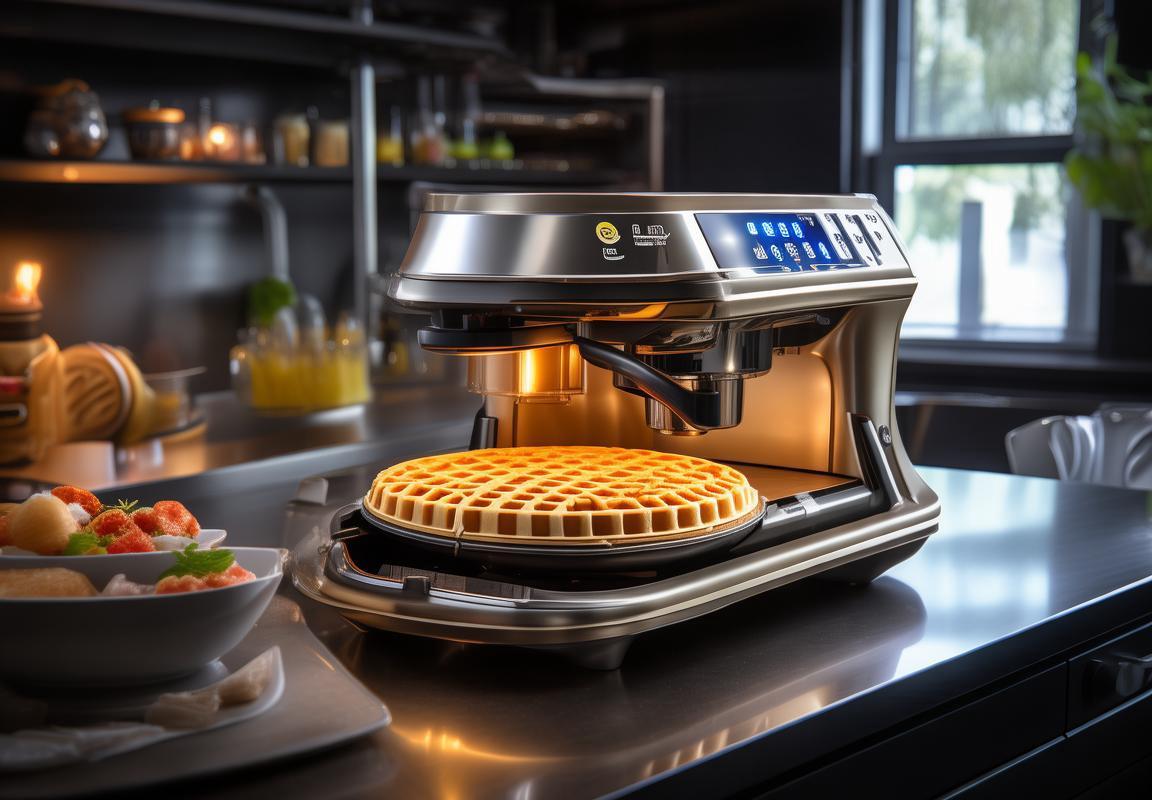
Comparison with Other Waffle Makers
The Belgian waffle machine has a distinct charm that sets it apart from other waffle makers on the market. From its unique design to its superior performance, let’s delve into what makes it stand out.
Belgian waffles are known for their large, deep pockets, which give them a superior texture and hold more toppings. This is due to the machine’s ability to cook at a higher temperature and with a different shape than standard waffle makers. When comparing Belgian waffle machines to others, several key features and benefits become apparent.
One standout feature is the heating element. Belgian waffle machines typically have a larger, more powerful heating element that ensures even cooking and a perfect golden brown color. This is in contrast to some other waffle makers that may struggle to achieve the same level of browning or consistency.
The plates are also a significant difference. Belgian waffle machines have two large plates, often with intricate patterns, which create the distinctive shape and pocket size. This design not only enhances the visual appeal but also the practicality of the waffle. The deep pockets are perfect for holding a variety of toppings, from fresh berries and whipped cream to chocolate syrup and bacon bits.
Another key factor is the size. Belgian waffles are larger than traditional American waffles, and as such, the machines are designed to accommodate this size. This means you can serve more people with each batch, making it a great choice for gatherings or family breakfasts.
The cooking process also differs. Belgian waffle machines often take longer to cook than their counterparts, but this is due to the depth and complexity of the waffle. The longer cooking time allows the batter to set properly and ensures that the waffle is fully cooked throughout. Patience is a virtue when it comes to Belgian waffles, and the machine is designed to deliver results that justify the wait.
In terms of versatility, Belgian waffle machines offer more options. They can be used to make traditional Belgian waffles, but many models can also cook other types of waffles, such as mini, pita, or even bread-like items. This versatility makes them a valuable addition to any kitchen, whether for daily use or special occasions.
Maintenance is another aspect to consider when comparing Belgian waffle machines. These machines often have non-stick surfaces, which reduce the need for butter or cooking spray. However, they can be more challenging to clean due to the larger size and more intricate designs. It’s important to follow the manufacturer’s cleaning instructions to keep your machine in top condition.
While Belgian waffle machines may be more expensive than some other waffle makers, their superior quality and performance can be well worth the investment. They are built to last and can be a cherished appliance in any kitchen.
In the realm of design, Belgian waffle machines often have a sleek, modern look that complements contemporary kitchen aesthetics. The combination of functionality and style makes them a popular choice for those who appreciate both the taste and the presentation of their food.
In conclusion, when comparing Belgian waffle machines to other types of waffle makers, it’s clear that they offer a unique set of features and benefits. From their larger size and deeper pockets to their superior cooking quality and versatility, Belgian waffle machines are a cut above the rest. Whether you’re a fan of the classic Belgian waffle or looking for a versatile appliance that can add a touch of elegance to your kitchen, these machines are a worthwhile investment.
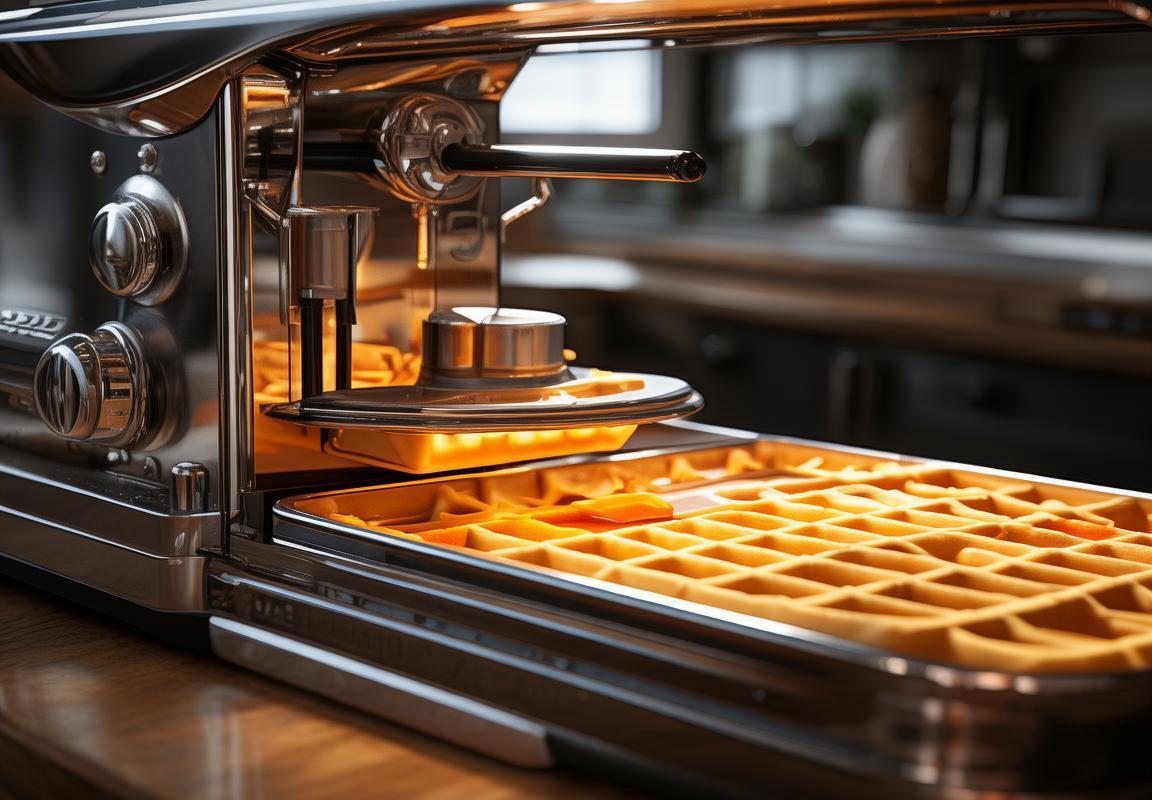
The Impact of Sustainability on the Industry
In recent years, sustainability has emerged as a crucial factor shaping various industries, and the kitchen appliance sector is no exception. The growing emphasis on environmental responsibility has prompted manufacturers to reevaluate their production processes, materials, and product lifecycles. This shift is particularly evident in the realm of Belgian waffle machines, where sustainability is not just a trend but a defining characteristic of the industry’s evolution.
The use of eco-friendly materials has become a hallmark of modern waffle machines. Recyclable plastics, sustainable woods, and energy-efficient components are now standard in the design of these appliances. This not only reduces the environmental footprint but also appeals to consumers who are increasingly conscious of the impact of their purchases on the planet.
Manufacturers are also focusing on energy efficiency, with many Belgian waffle machines now equipped with features that minimize power consumption. Advanced heating elements and programmable settings allow users to cook waffles with precision while using less energy. These innovations not only save money on electricity bills but also contribute to a lower carbon footprint.
Moreover, the longevity of products is a key aspect of sustainability. Belgian waffle machines are being designed with durability in mind, featuring robust construction and high-quality parts that can withstand frequent use. This approach reduces the need for frequent replacements, thus cutting down on waste and the resources required for manufacturing new appliances.
The packaging of these waffle machines is also being reevaluated. Companies are moving away from excessive packaging materials, opting for biodegradable or recyclable options that are less harmful to the environment. This change reflects a broader trend in the industry where minimalism and sustainability go hand in hand.
The impact of sustainability extends beyond the product itself to the entire lifecycle of the Belgian waffle machine. From the sourcing of raw materials to the end-of-life disposal, manufacturers are exploring ways to minimize their environmental impact. For instance, some companies are offering recycling programs for old appliances, ensuring that they are properly disposed of and their materials reused.
In the retail sector, sustainability is influencing consumer behavior. Retailers are showcasing eco-friendly products more prominently and offering incentives for customers who choose sustainable appliances. This includes discounts on energy-efficient models or rewards for returning old appliances for recycling.
Furthermore, the industry is witnessing a surge in demand for appliances that can be easily repaired and maintained. Consumers are no longer satisfied with single-use products that quickly become obsolete. Instead, they are seeking appliances that can be serviced and updated, extending their lifespan and reducing waste.
The integration of smart technology is another area where sustainability is making its mark. Belgian waffle machines with smart features can be controlled remotely, allowing users to program cooking times and temperatures to optimize energy use. This not only adds convenience but also ensures that appliances are used efficiently, further reducing energy consumption.
Lastly, the industry is paying closer attention to the health and safety of the workforce. Sustainable practices often involve safer production processes and the use of non-toxic materials, which not only protect the environment but also the health of the people involved in manufacturing.
In conclusion, sustainability is not just a buzzword in the kitchen appliance industry; it is a transformative force driving innovation and change. From the materials used to the lifecycle of the product, every aspect of Belgian waffle machines is being reimagined to align with the principles of environmental stewardship. This shift is not only beneficial for the planet but also for the consumers who are increasingly making sustainable choices in their daily lives.
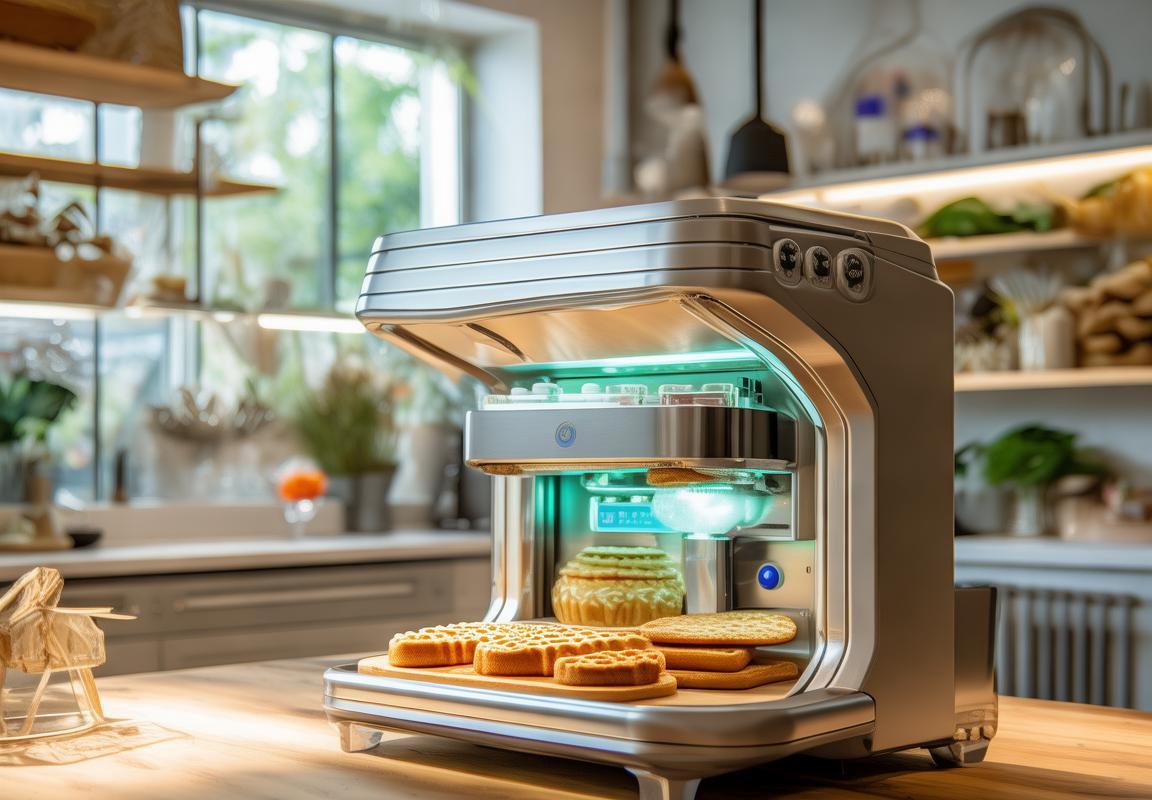
Expert Prediction and Future Outlook
In recent years, the has witnessed a significant shift in consumer preferences, with a growing trend towards sustainability and energy-efficient appliances. The impact of sustainability on the industry is profound, influencing everything from design and materials to manufacturing processes and customer expectations.
Sustainability has become a core value for many consumers, who are increasingly conscious of the environmental impact of their purchases. This shift has prompted manufacturers to reconsider their approaches to production, focusing on reducing waste, minimizing energy consumption, and utilizing eco-friendly materials. As a result, the industry has seen a surge in the development of green appliances that are both efficient and environmentally responsible.
One key aspect of sustainability in the kitchen appliance industry is the use of energy-saving technologies. Manufacturers are investing in innovations that not only reduce the appliances’ carbon footprint but also lower utility bills for consumers. For example, refrigerators with advanced insulation and energy-efficient compressors are becoming more prevalent, offering better performance while using less power.
The materials used in the construction of kitchen appliances are also coming under scrutiny. Recycled metals, biodegradable plastics, and sustainable wood are gaining popularity, as consumers demand products that align with their environmental values. This not only helps in reducing the industry’s carbon emissions but also contributes to the conservation of natural resources.
The impact of sustainability is also evident in the lifecycle of appliances. Companies are now focusing on durability and repairability, ensuring that their products last longer and can be easily maintained. This approach not only reduces the number of appliances ending up in landfills but also fosters a sense of long-term ownership and loyalty among consumers.
Consumer expectations have evolved alongside these sustainability efforts. Today’s customers are not just looking for appliances that work well; they are seeking products that reflect their commitment to a greener future. This has led to a rise in the popularity of smart appliances that offer remote control and monitoring, allowing users to manage their energy use more effectively and contribute to a more sustainable home environment.
Additionally, the industry is witnessing a trend towards modular and customizable designs. Appliances that can be easily upgraded or replaced with new components not only extend the life of the product but also allow consumers to adapt to changing needs and preferences without needing to discard the entire unit.
Moreover, the integration of renewable energy sources is another significant aspect of sustainability in the appliance industry. With the rise of solar panels and other renewable technologies, manufacturers are exploring how to incorporate these energy sources into their products, making them more self-sufficient and environmentally friendly.
In the realm of sustainability, certifications and labeling have become increasingly important. Consumers are more likely to choose products that carry eco-labels or have been certified by reputable organizations, as these certifications provide a clear indication of the product’s environmental impact.
As the industry continues to evolve, there are challenges ahead. Balancing sustainability with affordability and functionality remains a key concern. However, the industry’s response to these challenges is shaping a new norm where innovation meets responsibility.
Educating consumers about the benefits of sustainable appliances is also crucial. As awareness grows, consumers are better equipped to make informed choices that align with their values. Manufacturers, in turn, are investing in educational campaigns and marketing strategies that highlight the environmental benefits of their products.
Looking ahead, the future of the kitchen appliance industry is undeniably intertwined with sustainability. As the global community becomes more environmentally conscious, the industry will need to continue to innovate and adapt. This may involve the development of new materials, the creation of more efficient manufacturing processes, and the integration of advanced technologies that enhance energy efficiency and reduce waste.
The sustainability movement has not only reshaped the kitchen appliance industry but has also set a precedent for other sectors. It demonstrates that business can be profitable while also being environmentally responsible, fostering a more sustainable and resilient future for all.